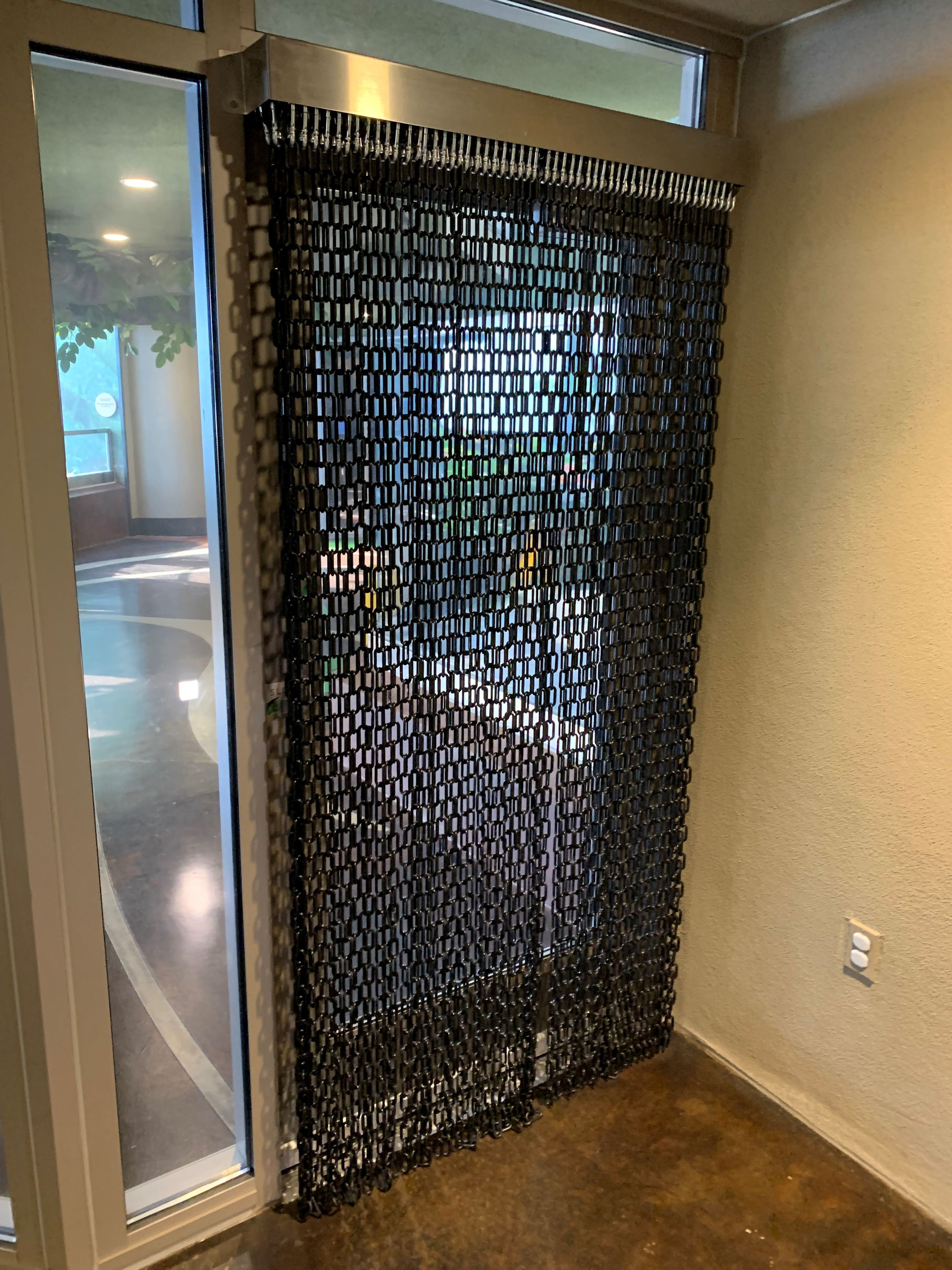 Nancy Chiang of Cuningham Group Architecture sent me today’s Fixed-it Friday photo, and I’m wondering what you all think. Nancy saw this door while visiting a zoo, where the chains are used to keep the “wildlife” from passing through between two portions of the exhibit.
Nancy Chiang of Cuningham Group Architecture sent me today’s Fixed-it Friday photo, and I’m wondering what you all think. Nancy saw this door while visiting a zoo, where the chains are used to keep the “wildlife” from passing through between two portions of the exhibit.
Although this door doesn’t have an exit sign, neither Nancy nor her husband (both architects) noticed other marked exits. There was at least one other door with the same chain application.
The chains are similar to the plastic strip curtains sometimes used to limit airflow. So what do you think? Ok? Or no way?
And remember, doors provided for egress purposes must comply with the codes, even if the doors are not required exits.
WWYD?
You need to login or register to bookmark/favorite this content.









I give up,,,
Do you walk thru the chains??
or
Do the chains swing with the door?
or Other??
I’m pretty sure you walk through the chains.
– Lori
In other zoo exhibits I’ve seen screen doors, flood lights, and air curtains used for the same purpose. Hanging chain is definitely a first. Lots of unknowns make it difficult to decide this with absolute certainty.
With the chain resting on the floor it does create a tripping hazard for the young or old and a roll over obstacle for a wheelchair, stroller, walker, etc. In general, I wouldn’t accept this arrangement in terms of the ADA from a bunch of different perspectives. As for exiting or being part of the means of egress it strongly looks to be problematic, but the possibility does exist for other compliant exits such that this could potentially just be considered a communicating opening though I would still anticipate the loss control engineer for this facilities GL insurance carrier would not accept such an arrangement either.
Ok looking at the picture again. Looks like you walk through the chains.
1. Not sure I would approve it on many levels,,,
Even if there is another exit door directly next to it.
Like above trip and entanglement potential
Hides the actual door
Even though not much different than plastic strip curtains,,,, but those are more used by employee only.
Requiring that animal enclosures satisfy normal egress requirements would often make them unsuitable for their primary purpose of holding animals.
I’ve been in a zoo–I think in Memphis–with a bird enclosure like the one pictured. The chains were designed to hang sufficiently close enough to the floor that a bird would be unable to walk underneath, but were not long enough that someone could stand on one of them. There was no glass or other barrier between the birds and the people; the exhibit was somewhat analogous to an avian petting zoo. Not that people were encouraged to try to pet the birds, but the birds would be free to land on anyone who let them.
I would expect that people in wheelchairs could best be accommodated by having the attendant hold the chain aside while being ready to shoo away any birds that might approach.
The way the chains were constructed, I doubt anyone could become tangled accidentally, and I don’t think the attendant would have taken kindly to people deliberately messing with the chains in any manner that could cause entanglement (since, if nothing else, doing so might create gaps through which birds could elope).
The “wildlife” Lori refers to are zoo visitors, not the animals – all animals in that space are behind glass cages. I’m not sure if the chains are meant to darken the space or just for decor. Each chain swings individually and is not connected to the door. We had to fight our way through the chains to the exit – after having trouble finding the door.
Oh! I thought the chains were keeping out birds, butterflies, etc.!
– Lori